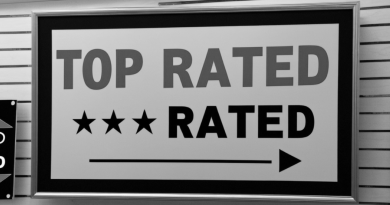How Value Hierarchies Perpetuate Inequalities
Consumers are a powerful force in the marketplace. They drive brand loyalty and can create market winners. They can punish bad actors and launch social movements that create and spread changes. They can serve as advocates of important issues impacting society from driving attention to causes from specific diseases to saving the environment. What happens when consumers create hierarchy in the marketplace? How does this take place and what are the consequences of such actions in the long term? In their JCR 50th Anniversary paper, Lez Trujillo-Torres, Benet DeBerry-Spence, Sonya Grier, and Søren Askegaard, address these questions by drawing insights from an investigation of the cancer care market from 1970 to 2021. This is an important market given it “represents approximately 7% (nearly $209 billion) of all U.S. health expenditures related to diseases (National Cancer Institute 2020)” and affects the health and wellbeing of patients and their families.

The authors show that the experiences of consumers impacted by cancer are not equally valued, constituting what the authors call a “value hierarchy.” For example, after decades of organized advocacy, diseases like breast cancer and leukemia today have a great deal of public and media attention, governmental and private funding, and a greater share of approved treatments than other cancer types. In other words, these diseases are highly valued within the US society. Thus, it is not surprising to see the experiences of patients impacted by these diseases sympathetically showcased in billboards and news coverage. Also, funding appeals for these diseases abound in sporting events, places of work, and even within supermarkets. Consider the omnipresence of the pink ribbon as a sign of breast disease to illustrate how much the average person knows about this disease as compared to other cancer types. Value hierarchy also exists across other types of consumers. For example, we know more about the consumption experiences of middle class and urban consumers as compared to those from low income and rural contexts.
Differences across consumers are not new to consumer research, after all marketing involves creating and targeting different categories of consumers. However, the authors explain how consumer researchers have overlooked that a value hierarchy, where the experiences of some consumers are deemed highly valorized while others are perceived as less ‘worthy,’ carry significant and unintended inequality. For example, lung and cervical cancer, despite decades of growing awareness of cancer, remain marginalized and stereotyped in health care settings and largely ‘invisible’ in society and in the marketplace. In other words, a value hierarchy can result in long-term inequality among consumers.
The reality is that inequality is pervasive across markets and societies. In fact, the United Nations indicates that inequality is “a global issue that defines our time” (United Nations 2023). To be clear, the authors do not argue that consumers intend to “harm” other consumers. However, valuation hierarchies and the inequality such hierarchies engender can have a host of unintended effects over time. First, inequality can be expressed in the way in which resources are distributed. In the cancer care market, due to long-term and effective advocacy, some cancer types simply get more resources like government funding, private donations, or media attention, in a way that reflects their place on a value hierarchy. Second, inequality can emerge in the way in which consumers in high-end hierarchy positions leverage the resources to consolidate their power to get closer to their desired objectives. For example, powerful cancer advocacy organizations strategically deploy fundraising sport events (e.g., Team in Training; Race for a Cure) to leverage private donations and public support toward better treatments and outcomes for patients. Third, inequality is also shown in the differential ability of some consumers to act and seek resources, with some having more agency than others to do so. For example, lung cancer patients have often been depicted as and considered responsible for their disease due the prominent association with smoking, which has impacted their ability to seek and receive cancer treatments.
Last, inequality is not a monolith and what makes one type of consumer be on top of a value hierarchy can change over time. The authors demonstrate that consumers in high-end hierarchical positions need to meet or have certain credentials to stay in that position. In the cancer care market, the good news is that, today, more and more consumers meet the new credential of ‘biological markers’ including the identification of cells, genes, proteins, etc. that qualify them for care treatments. Said in another way, because the credentials are changing, new consumers can access resources, wield power, and move up in the hierarchy.
While value hierarchy and the resulting inequality can have negative implications, the authors state that sometimes the emphasis on a handful of high-end hierarchy consumers can benefit others. For example, lung cancer and other types of cancers have dramatically benefited from scientific advances driven by the advocacy of breast cancer and leukemia. There is no denying the incredible effort and success of advocacy organizations and patients and families impacted by these diseases. After all, breast cancer at one point was considered an epidemic and, today, it continues to ravage the lives of millions of people throughout the world. However, the authors explain the ways in which value hierarchy and inequality operate and their consequences cannot be ignored, and consumer researchers must pay more attention to this intersection.
Read the full paper here:
After 50 Years, It Is Time to Talk about Value Hierarchy and Inequality
Lez Trujillo-Torres, Benet DeBerry-Spence, Sonya Grier, and Søren Askegaard
Journal of Consumer Research, Volume 51, Issue 1, June 2024, Pages 79–90




